The Nature of Things
An eco-friendly new home in Princeton serves as both sanctuary and gathering space.
Marirose Krall, Design NJ, February 2022
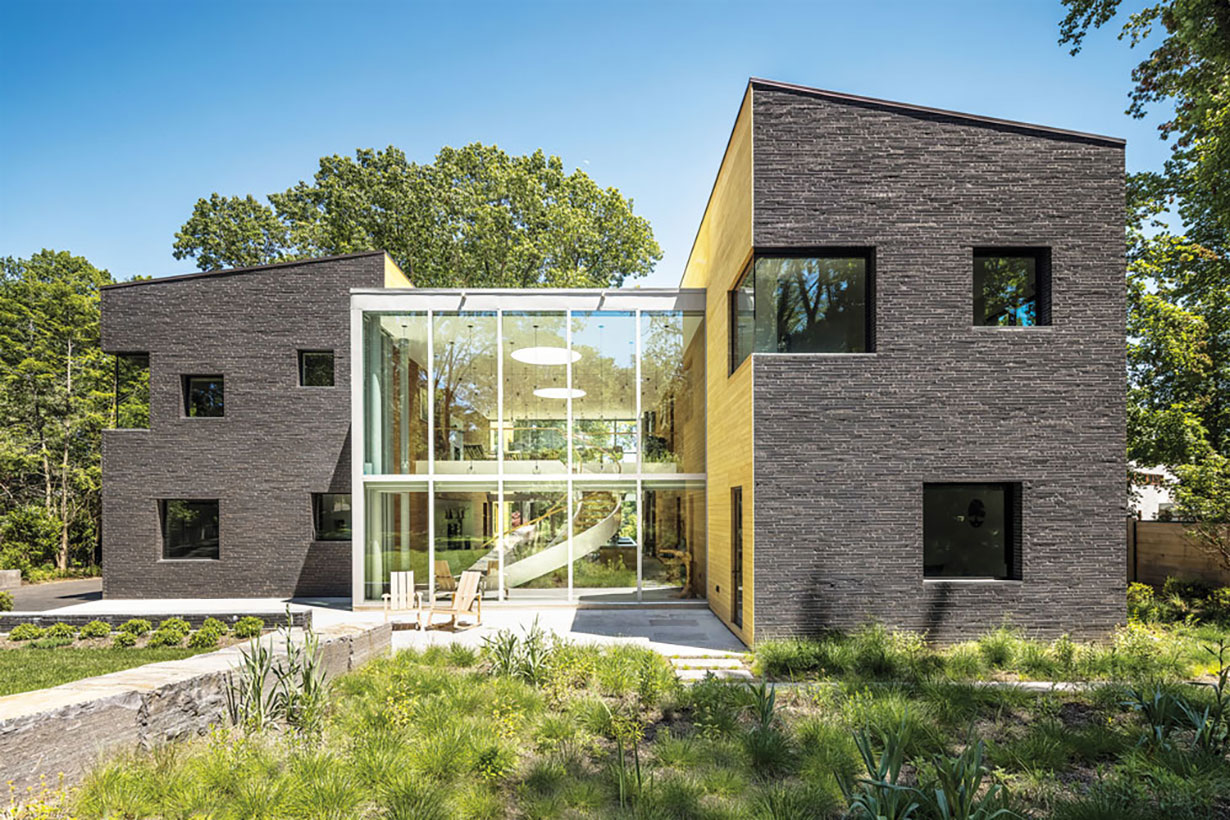
The home comprises three segments. Public spaces are in the center portion of the building; private spaces are in the left and right wings. Photo by Glen-Gery.
Photographer: Tom Grimes
Architect: Pierre-Henri Hoppenot
Builder: Lasley Brahaney Architecture + Construction
Location: Princeton, NJ
Opening Photo: Glen-Gery
The owners of this striking property in Princeton, New Jersey, wanted their new home to be both a peaceful haven and an entertainment hub. “This is a permanent residence for a couple whose four children have growing families who live nearby. Their home has always been a revolving door for friends, family and international visitors needing a place to stay for a few weeks while studying at Princeton University or in New York City,” says Pierre-Henri Hoppenot. Hoppenot, founder of Studio PHH Architects in Brooklyn, New York, designed a structure that accommodates the wishes of his clients while supporting the natural environment.
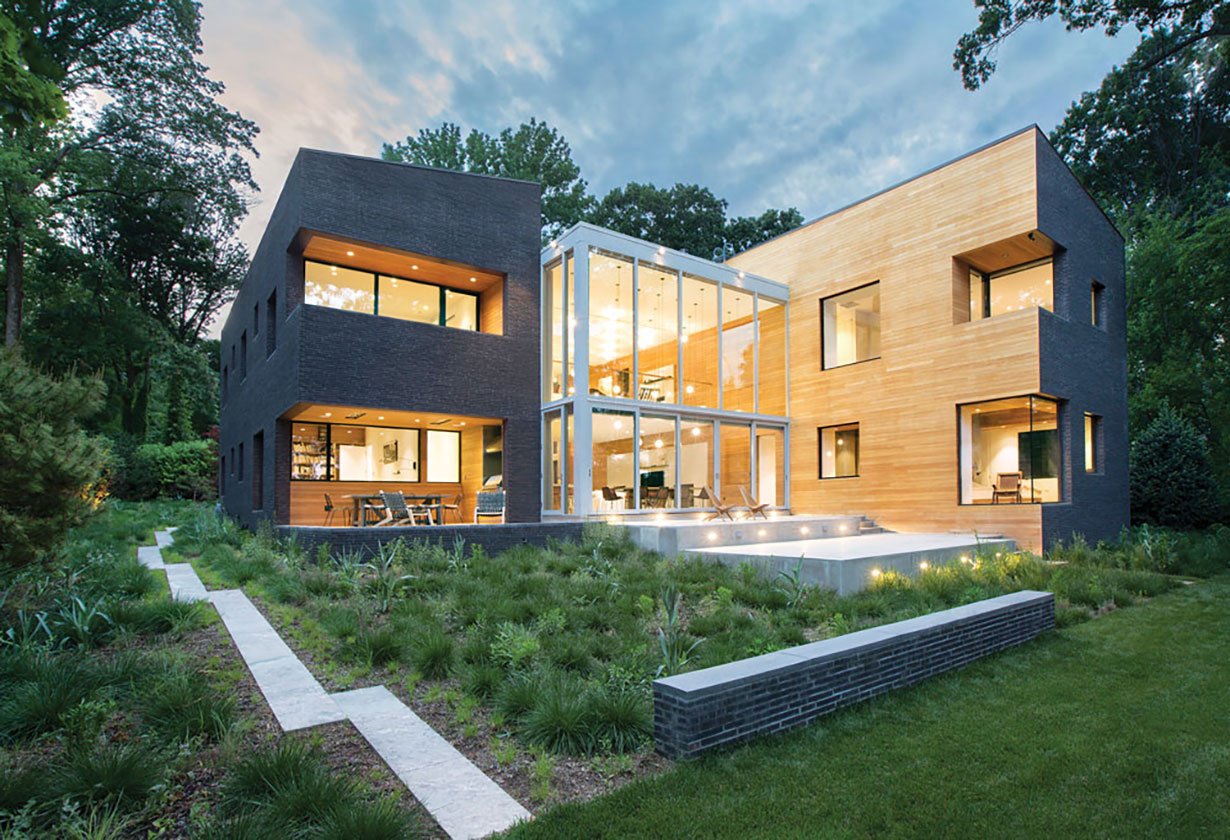
A teak-clad wall continues from interior to exterior. Architect Pierre-Henri Hoppenot explains, “The materials run from inside to outside, stretching out the room, blurring the boundaries and making sure the landscape and views always remain the focal point.”
Design NJ: What is the architectural style of this home?
Pierre-Henri Hoppenot: Although some might call it contemporary and leave it at that, I prefer to think of it as “warm minimalism.” The design aims to be meditative and simple with clean lines, leveraging hidden spaces for storage to preserve a calm, decluttered environment. Our focus, as with every project, is on combining warm, textured materials with natural light to create a unique quality of space. Every item in a room has a story and a personality, and the materials are carefully chosen to be “soft” and to make the space inviting.
DNJ: What kind of aesthetic do the owners prefer? How does this residence reflect that?
PHH: From the start, the homeowners placed a great deal of trust in our design process, which allowed us to narrow in on the elements that are most meaningful to them. There was not a specific “look” we were trying to achieve. The conversations around a successful outcome were always around the way the space would “feel” and function.
DNJ: The home comprises three segments. What is the function of each segment?
PHH: The primary material for the house is light. “La Clairière,” as the house is named, means “the glade” in French and refers to the central gathering space as the center of the home and of the family. This light-filled volume connects to the landscape on both sides, capturing the sunrise and sunset within the same space. Carefully positioned within this room are the kitchen, dining and living areas, above which floats a mezzanine with beautiful views of the lake. One of the most incredible things in this central space is that the tops of the trees are always visible through the large window walls at each end. This space is perfect both for entertaining and for moments of quiet meditation.
The two dark-brick volumes on the sides are intentionally heavy objects that sit like carved monoliths. These host all the private spaces and were designed to provide peaceful and protected rooms that contrast with the center. Within these brick volumes, deep recessed openings of windows and balconies provide uniformity from the exterior while capturing a unique view specific to each interior space. The bedrooms, primary suite, garage, office, mudroom and laundry room are all carefully laid out to provide natural light and views while maintaining a sense of privacy and protection.
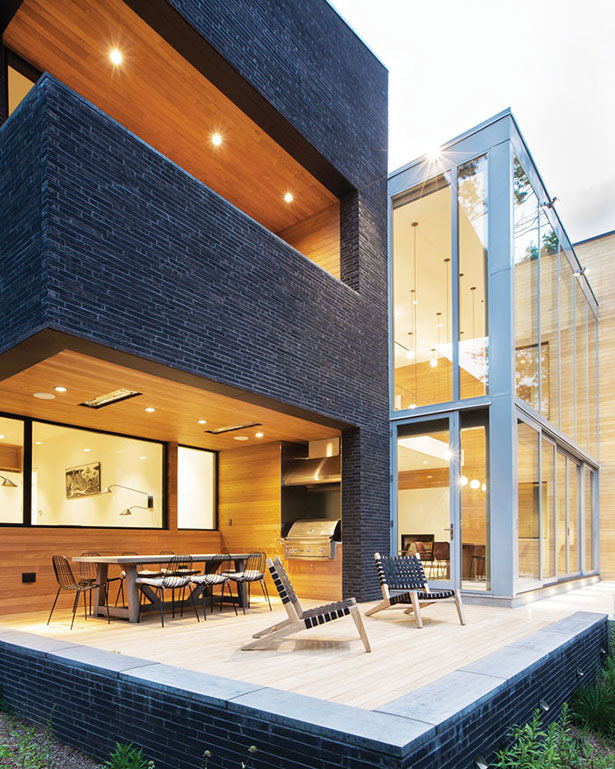
A second-floor balcony and first-floor deck seem carved from the stone of one of the home’s wings.
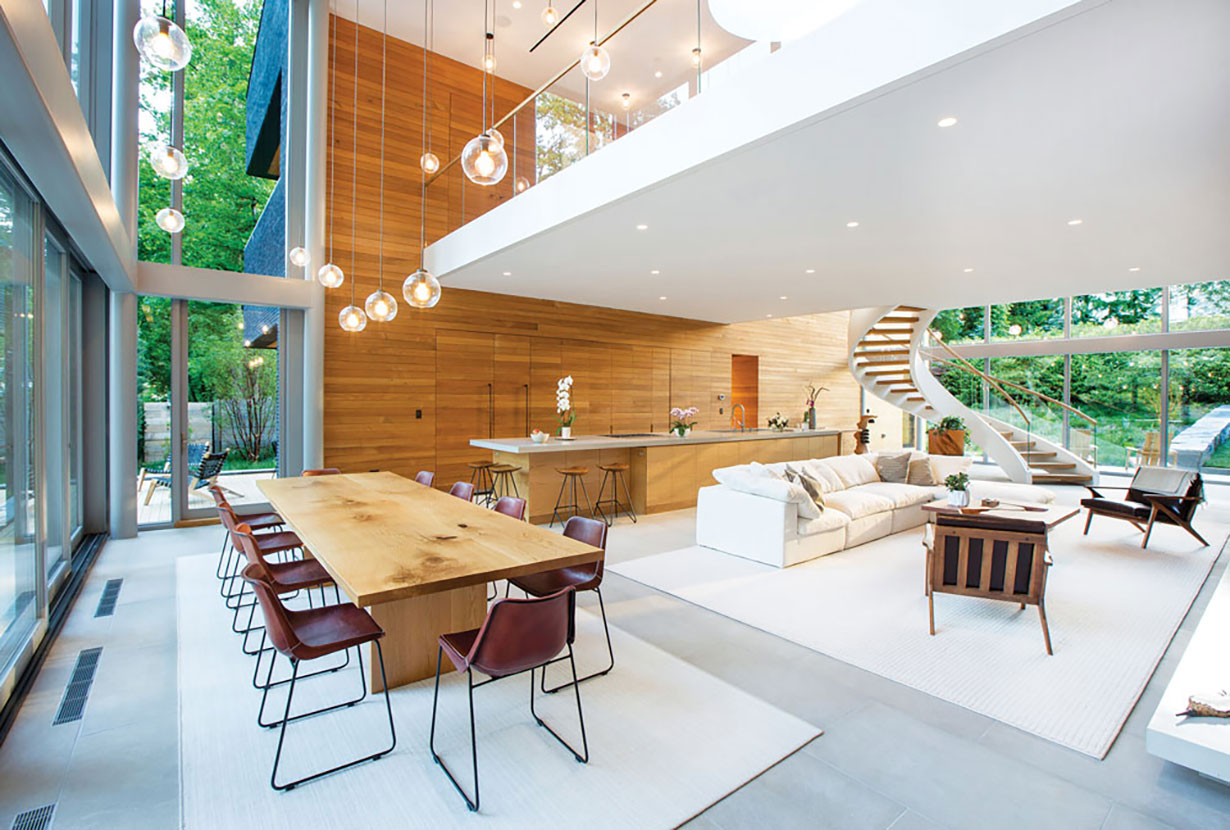
“The mezzanine has some of the best views of the lake through the 12-foot-tall upper windows,” Hoppenot says, “and features a game and reading room. It provides a sense of separation from the main gathering space below — perhaps for an after-dinner drink or card game — while remaining visually and audibly connected to the space as a whole.”
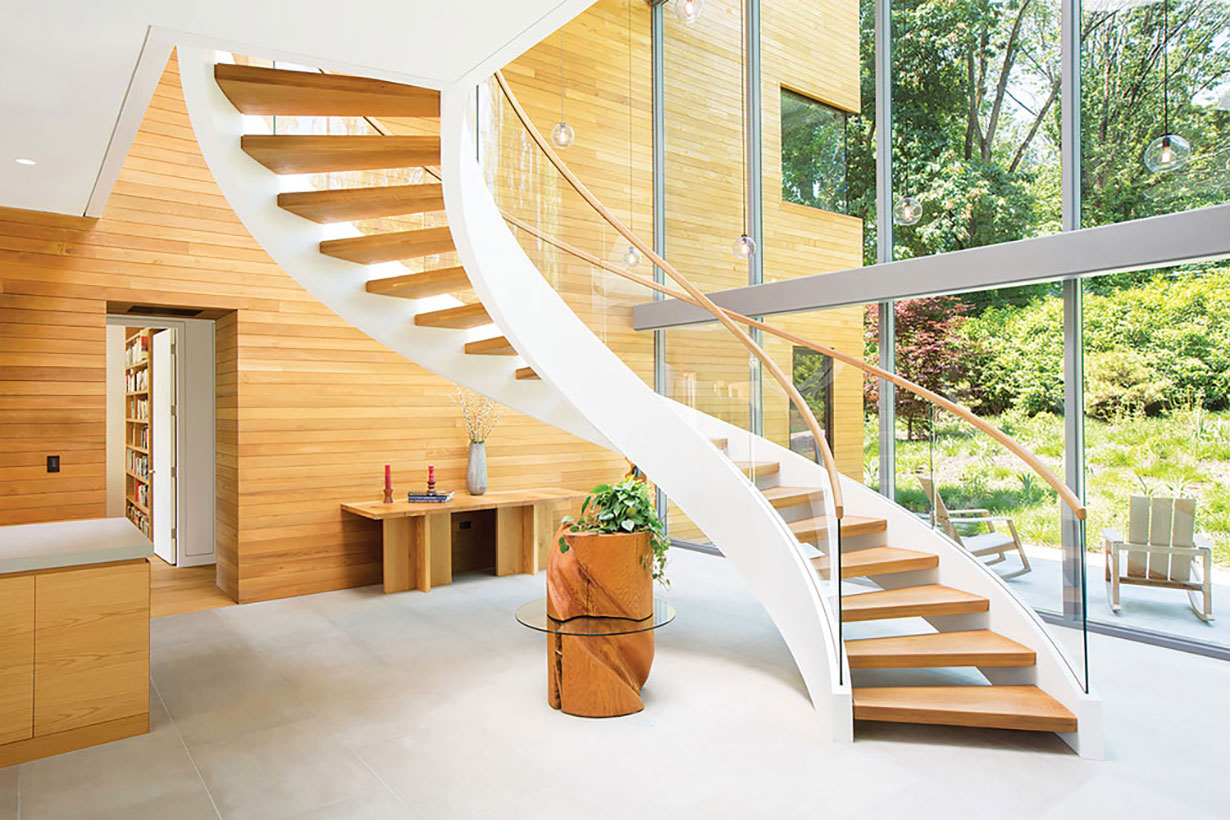
A floating staircase is a dramatic addition to the first floor, curving softly upward to the “floating” mezzanine. The door behind the staircase leads to the office, laundry room, guestroom and bathroom.
DNJ: Describe the home’s sustainable aspects.
PHH: The careful siting of the house shelters the space from southern sun and provides diffused natural light all day, minimizing the need for artificial lighting. All lighting in the house is LED, and the garage has two electric car chargers to take the solar power on the road.
In terms of materials, the wood walls in the central space are old-growth teak, reused from building demolition sites in Burma and requiring no new trees to be cut. The thick, insulated brick walls and insulated windows provide an airtight building envelope, reducing the need for heating and air-conditioning. The new home is equipped with energy-efficient systems, including radiant-heated floors downstairs. The interiors are carefully zoned, allowing the second-floor HVAC systems to remain off for large parts of the year.
The landscape, designed in collaboration with Andrew Zientek of A/Z Landscape Architecture, was created as a low-maintenance field populated with native plant species. It maximizes permeable surfaces to reduce stormwater runoff and increase infiltration while providing new habitats for birds and bees.
Overall, the residence is a net exporter of electricity — the concealed array of solar panels on the roof offsets all of the energy usage in the house and more.
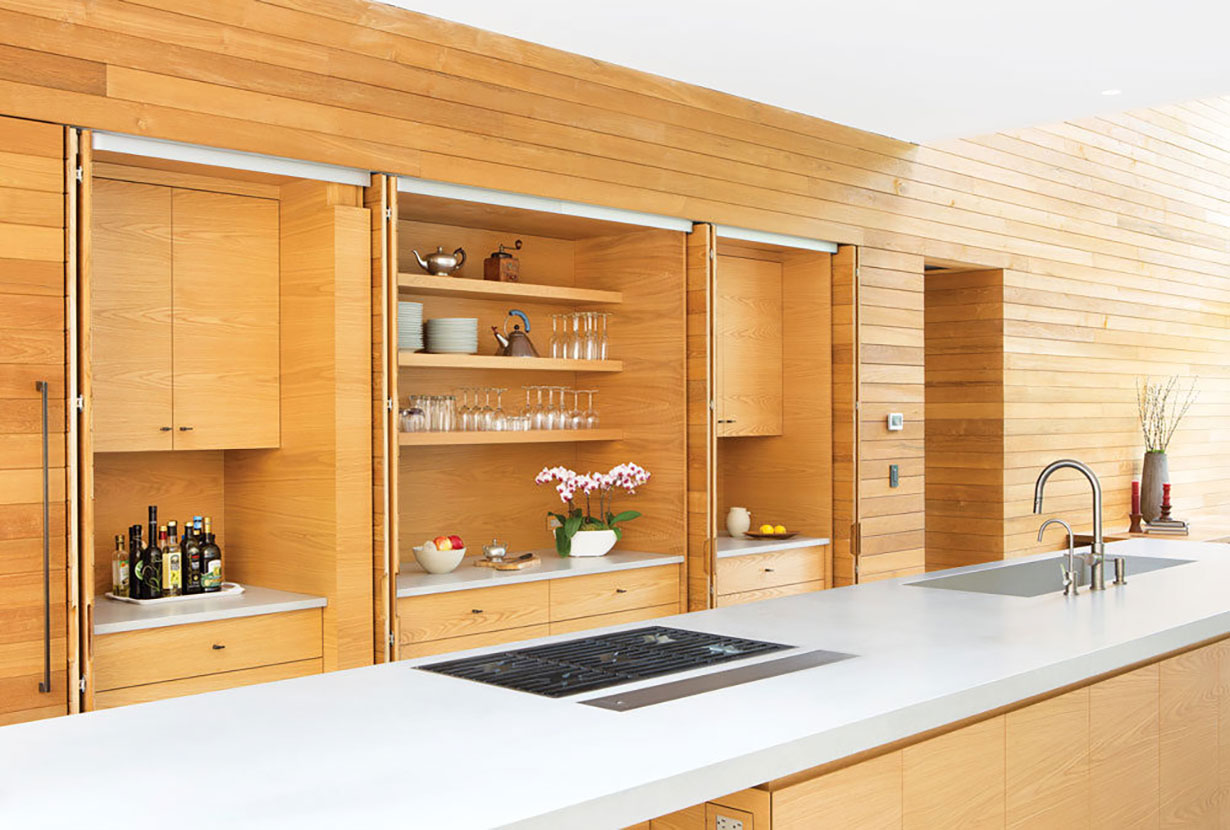
Kitchen storage is convenient yet easily hidden to maintain the clean look of the open-plan first floor.
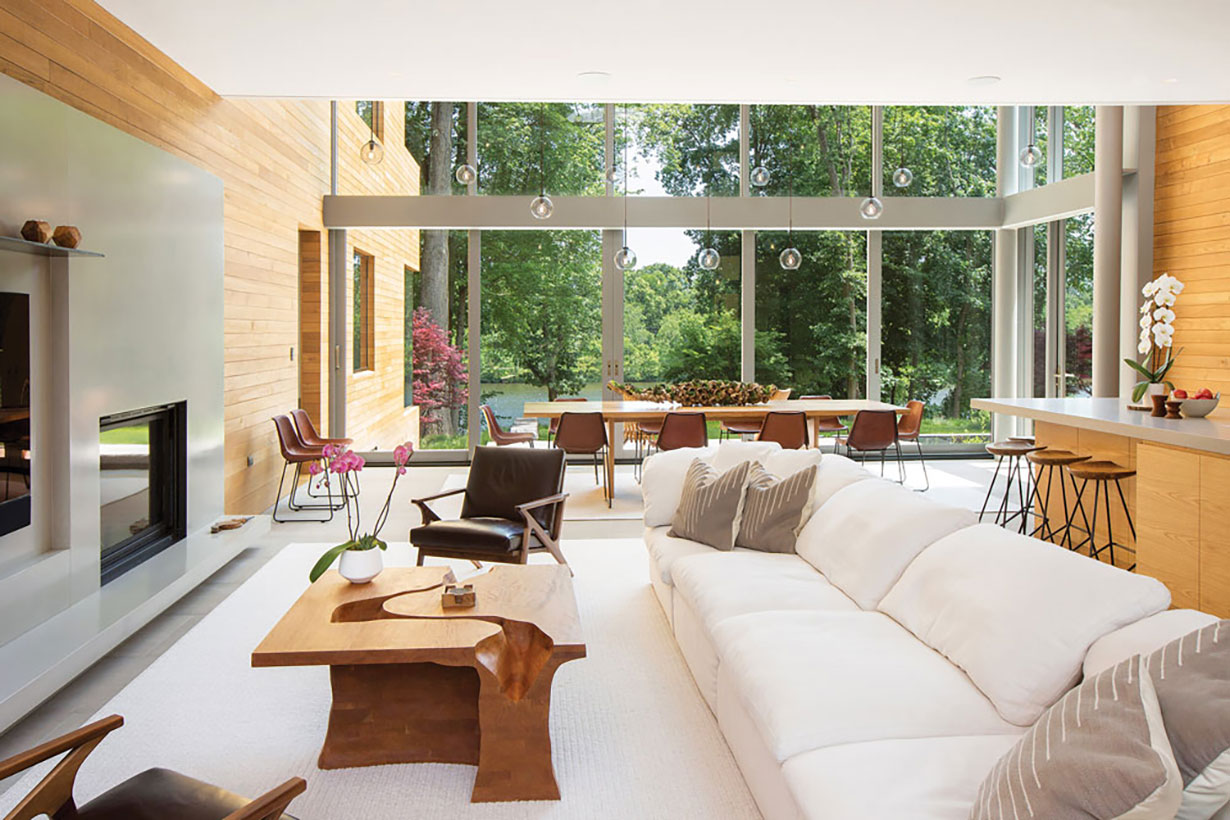
Neutral furnishings allow the views of forest and lake to stand out. “The window walls at the two ends of the room give the space a pavilion-like feel, a full connection to the rhythms of nature, whether those are storms or sunsets,” Hoppenot says. “Although it is, in a way, a very dramatic space, it is almost not a space at all.”
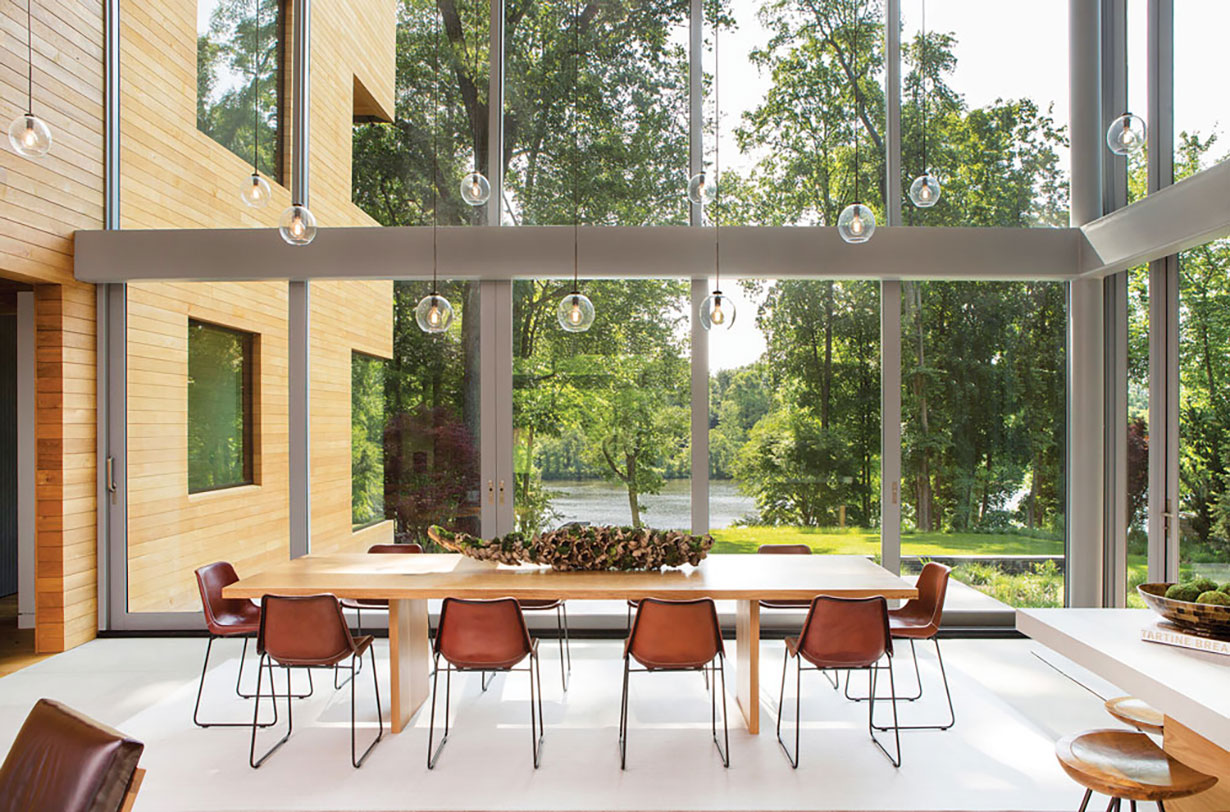
“The biggest challenge was to make the house disappear within the landscape,” Hoppenot says. “We strategically moved the house farther away from the edge of the lake and chose a natural exterior color, allowing the mass to recede between the trees and become almost invisible. This was an intentional way to allow the larger landscape to take priority.





